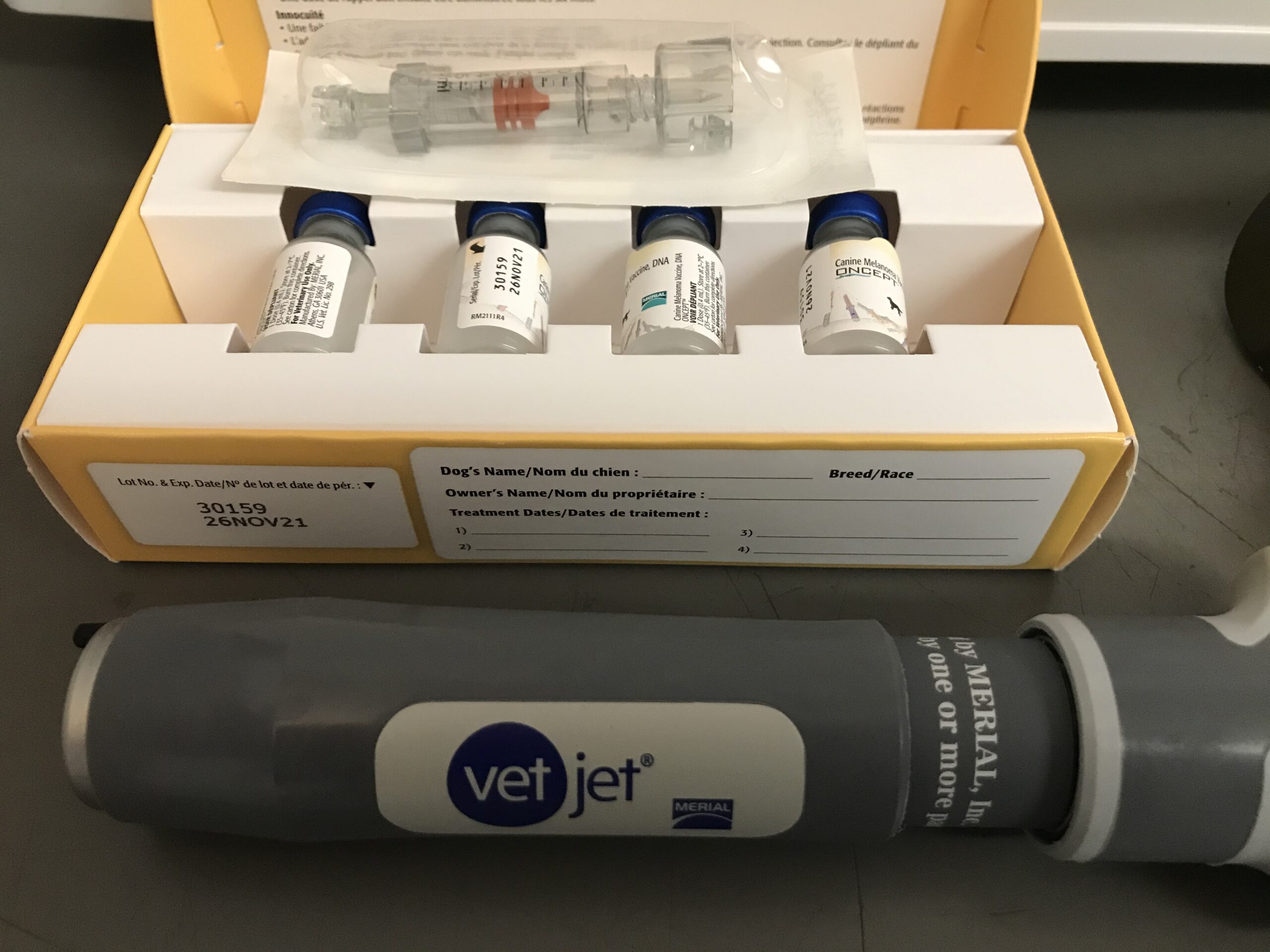Melanoma are pigmented tumours usually found on grey horses.
They can occur on other colour horses, but are less common.
They are most frequently found around the dock & perineum, but also occur in the skin, back of the throat, penis & sheath. Rarely they can be found in muscle or internally.
They can multiply and discharge black fluid or bleed, this can be particularly problematic in the summer with fly harassment. They can cause discomfort if they press on other structures.
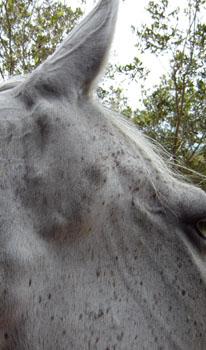
Melanoma in salivary gland / lymph node
Until recently, vets would often advise to do nothing as no effective cure was available. Now we are keen to manage them as small tumours, rather than wait until they become so large they are in-operable.
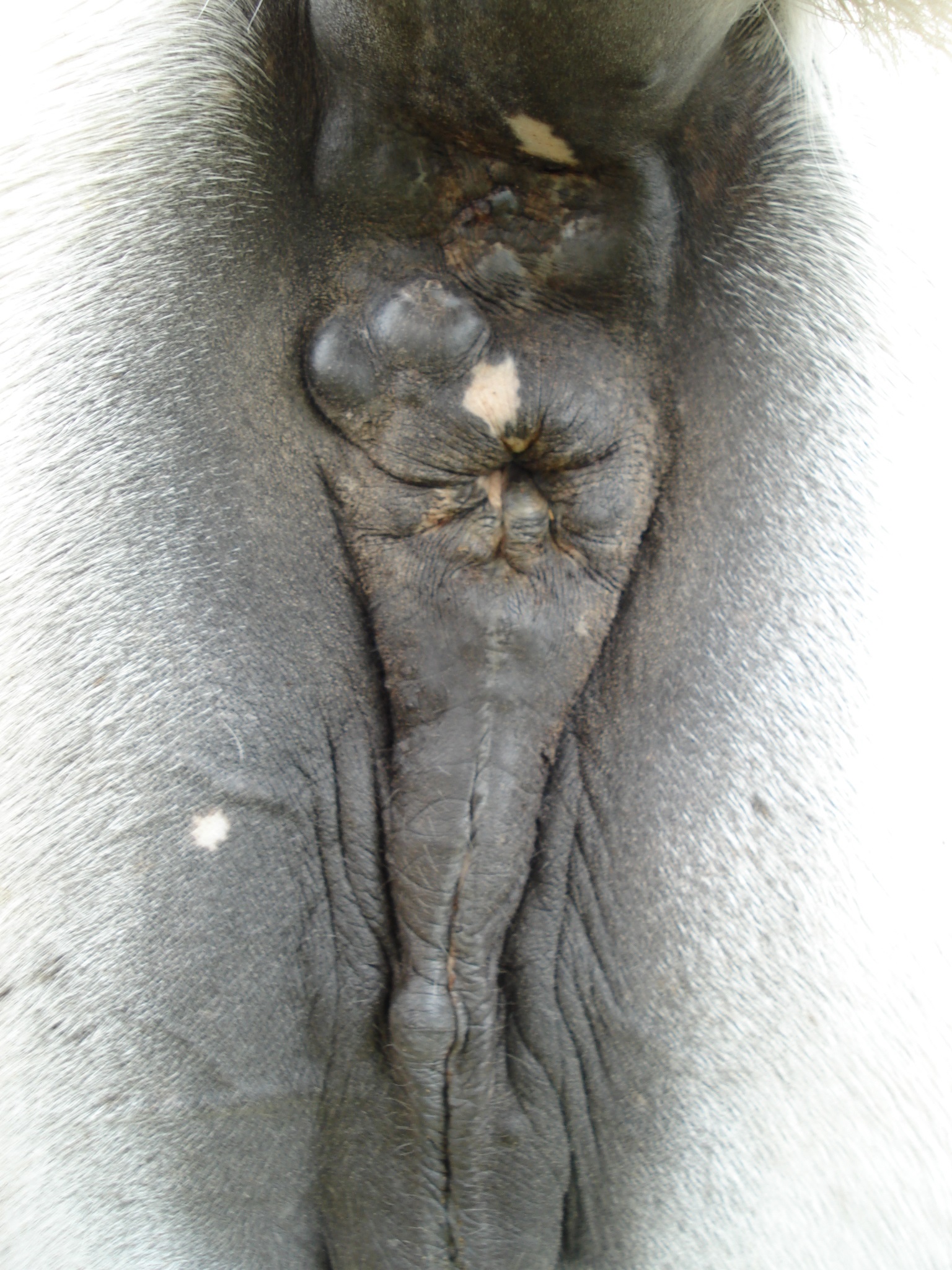
Perineal melanomas; these can become so numerous that they deform the area
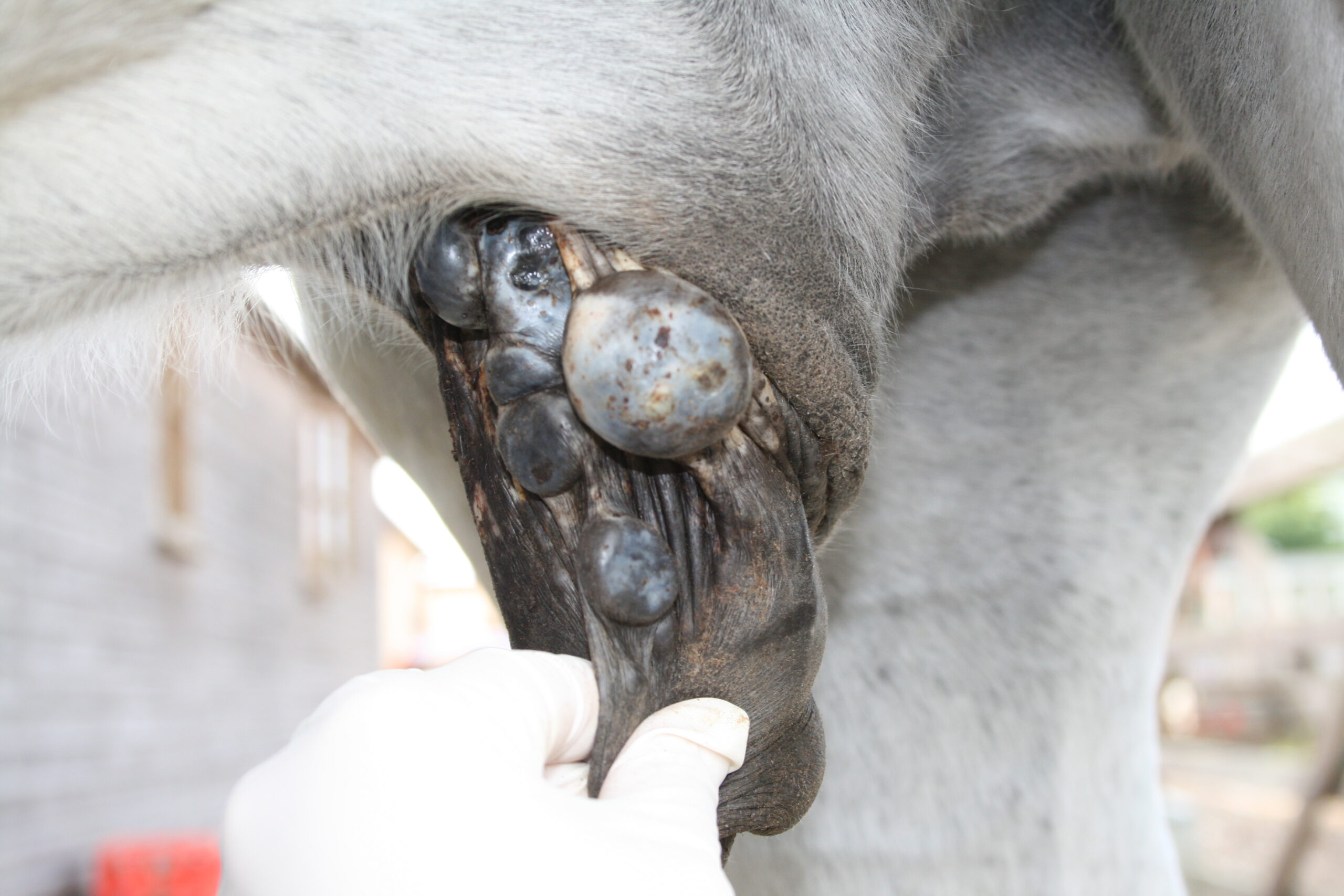
Penile tumours (melanomas)
Lasering is a great alternative to traditional surgery as it controls bleeding as the tumour is removed; it also gives good cosmetic results. Lasering is usually carried out under standing sedation and local anaesthesia – it is extremely well tolerated by horses and donkeys.
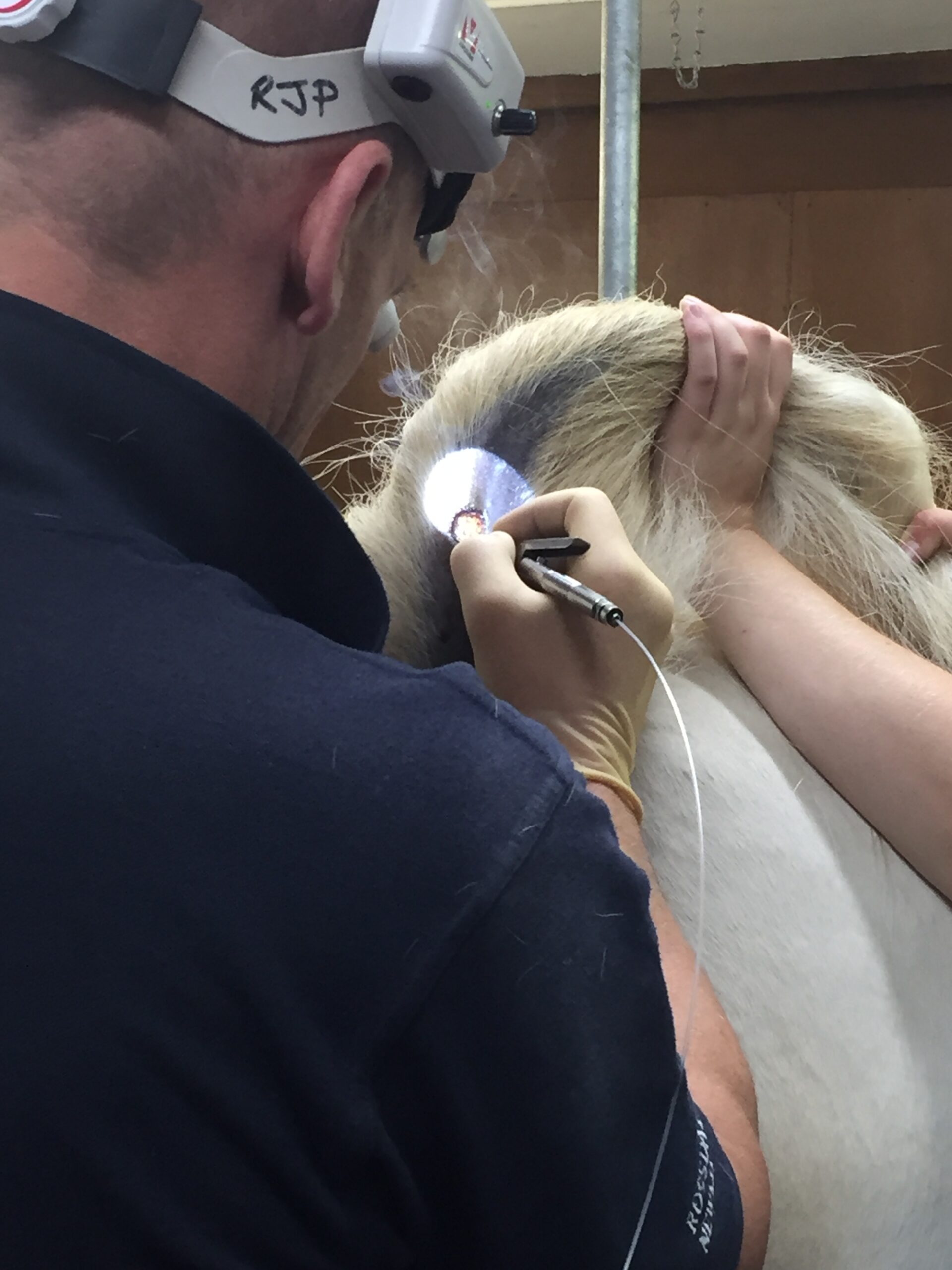
laser surgery in progress
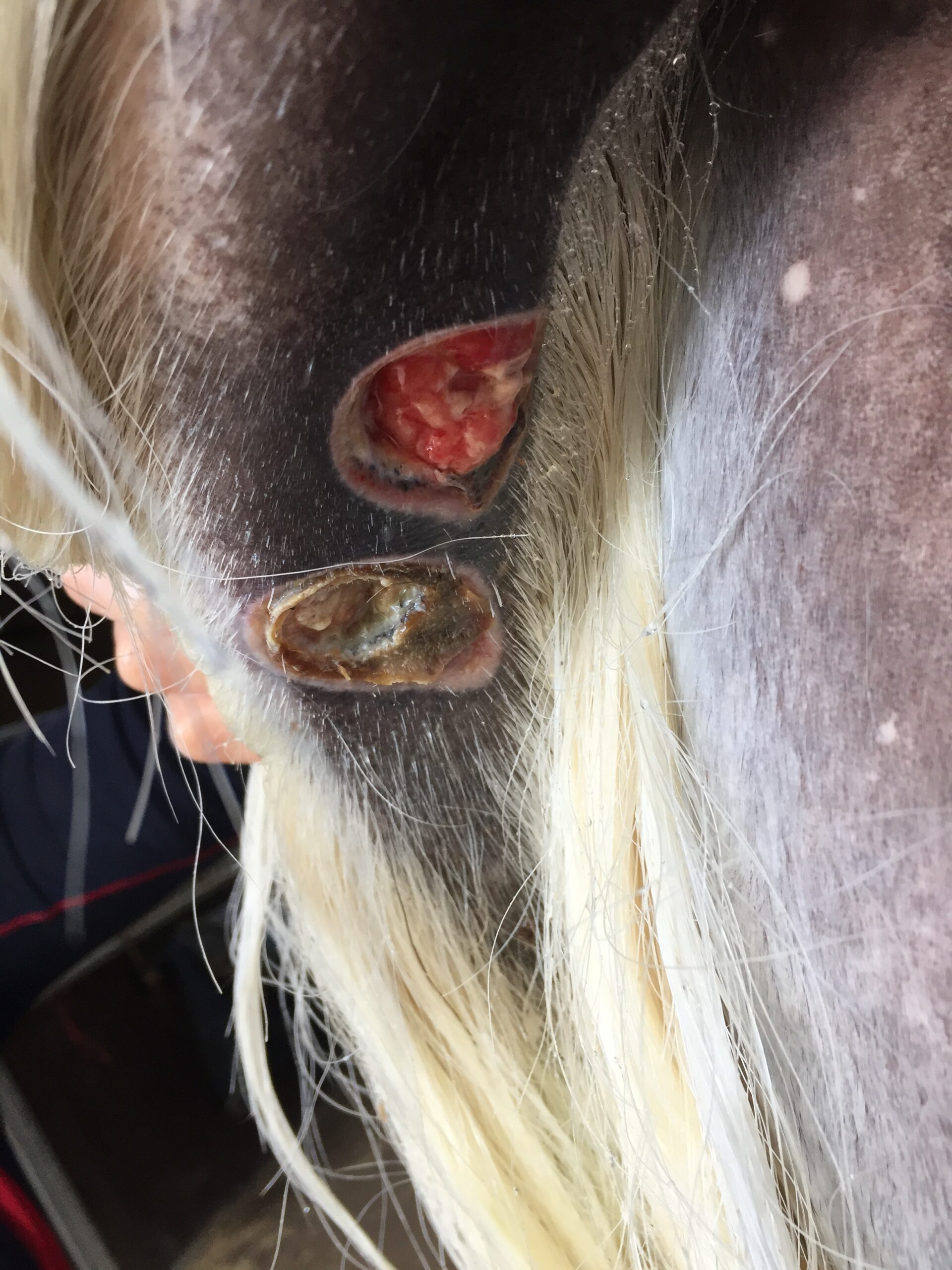
10 days post op – laser removal of dock sarcoids
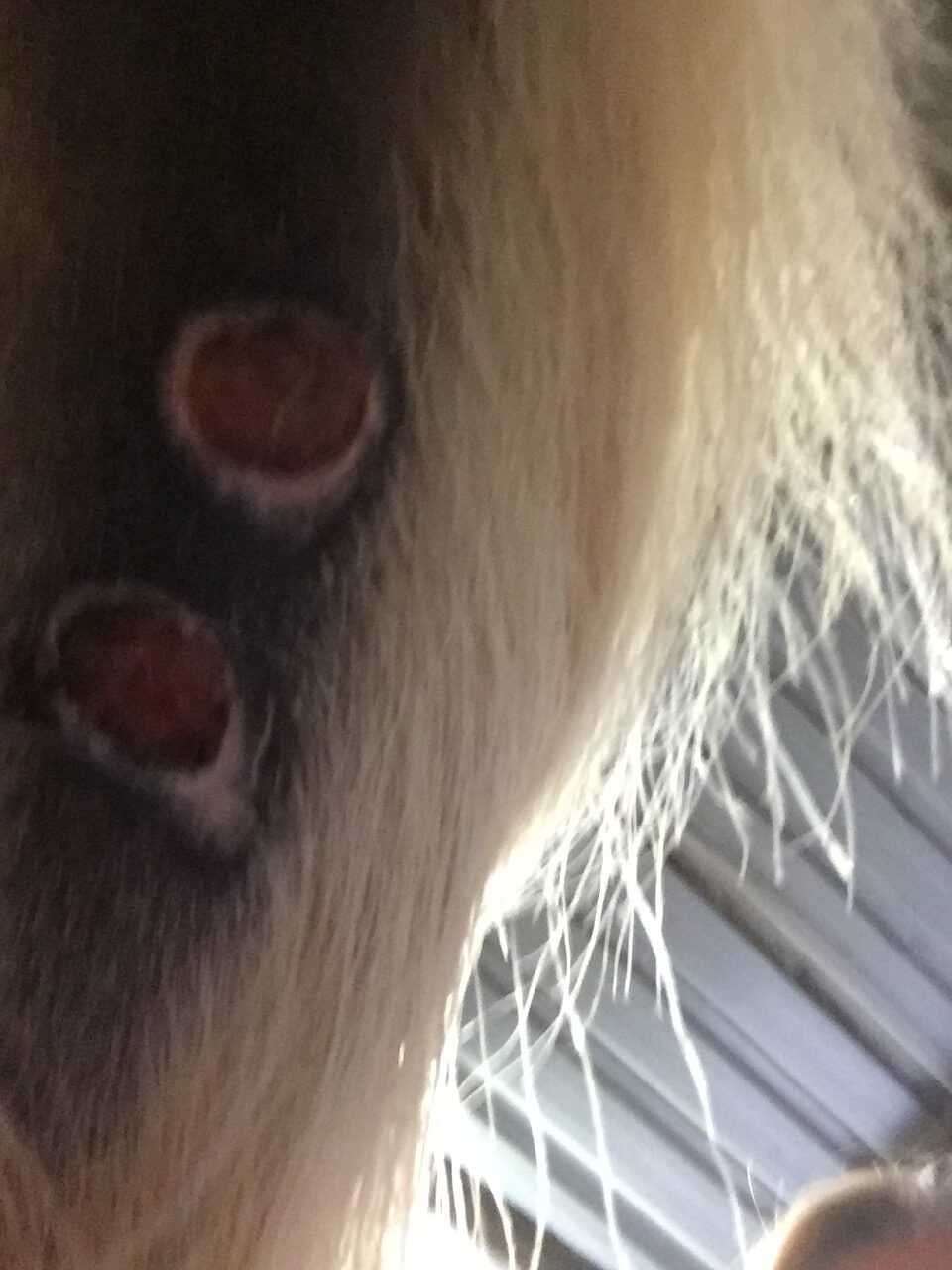
3 weeks post op – laser removal of dock melanomas
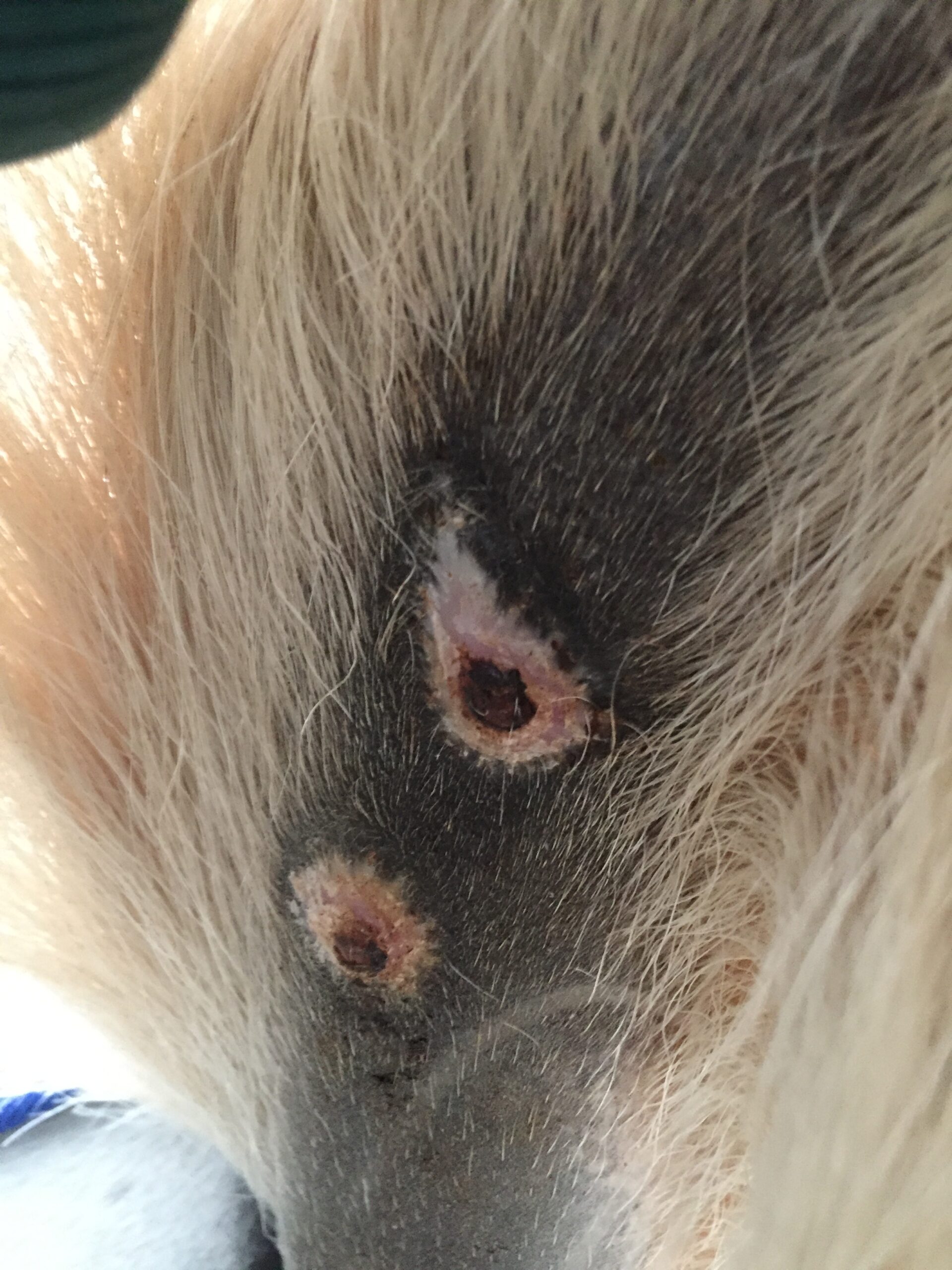
5 weeks post op – laser removal of dock melanomas
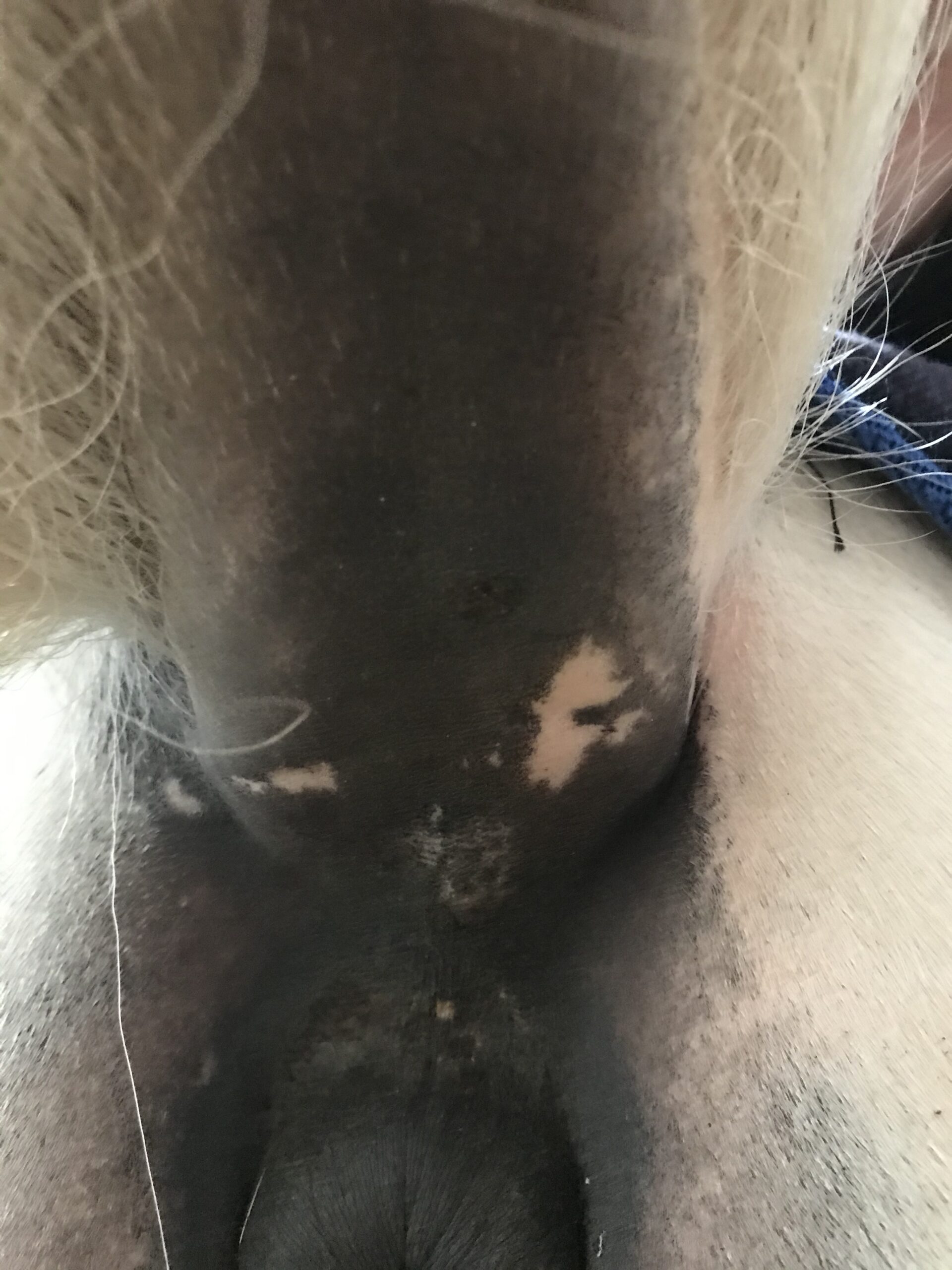
Final cosmetic result of dock melanoma removal
There is a vaccine licensed for dogs in the USA to assist in the management of melanomas. It is not licensed in the horse but has been prescribed in the UK under the veterinary medicine prescribing cascade by equine veterinary surgeons with an interest in oncology (the study of cancer). It is a DNA-based vaccine which stimulates the body to produce an immune response to a protein found in the melanoma cells. This means that the vaccine can have an effect on internal melanomas that we can’t see or might not even know are there. Initial results show a positive response from some horses, but not every horse. Most melanomas will stop growing; some will shrink. Before we start a vaccination course, we use callipers to measure all visible melanomas so we can monitor response to the vaccine. If a horse is assessed suitable for the vaccination; the initial course is 4 vaccinations 2 weeks apart, followed by 6 monthly boosters.
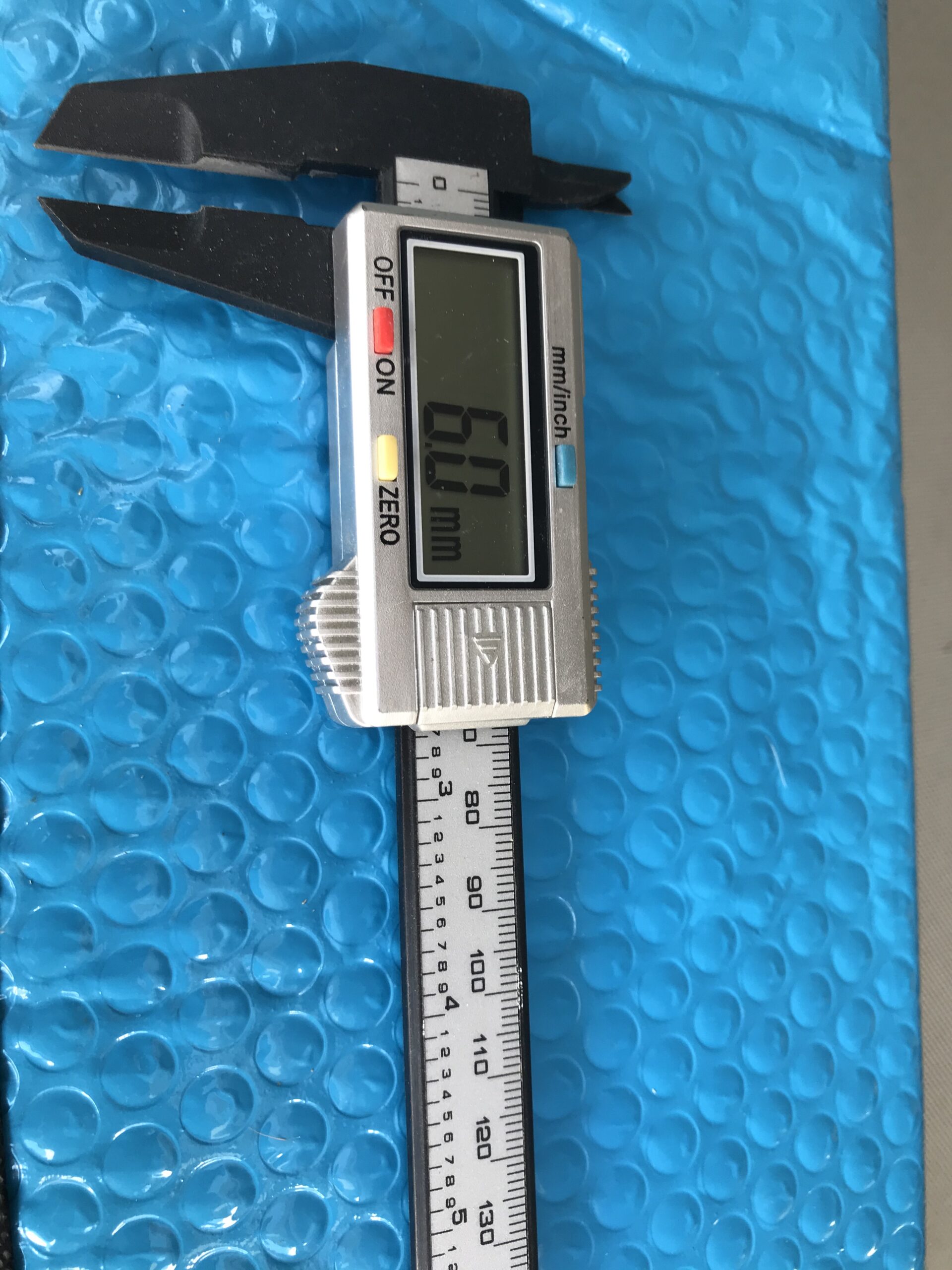
callipers are used to monitor melanoma size
The vaccine is given using a special applicator because it has to be placed intradermally (i.e., into the skin, not under it or into muscle, which is how most horse injections are given)
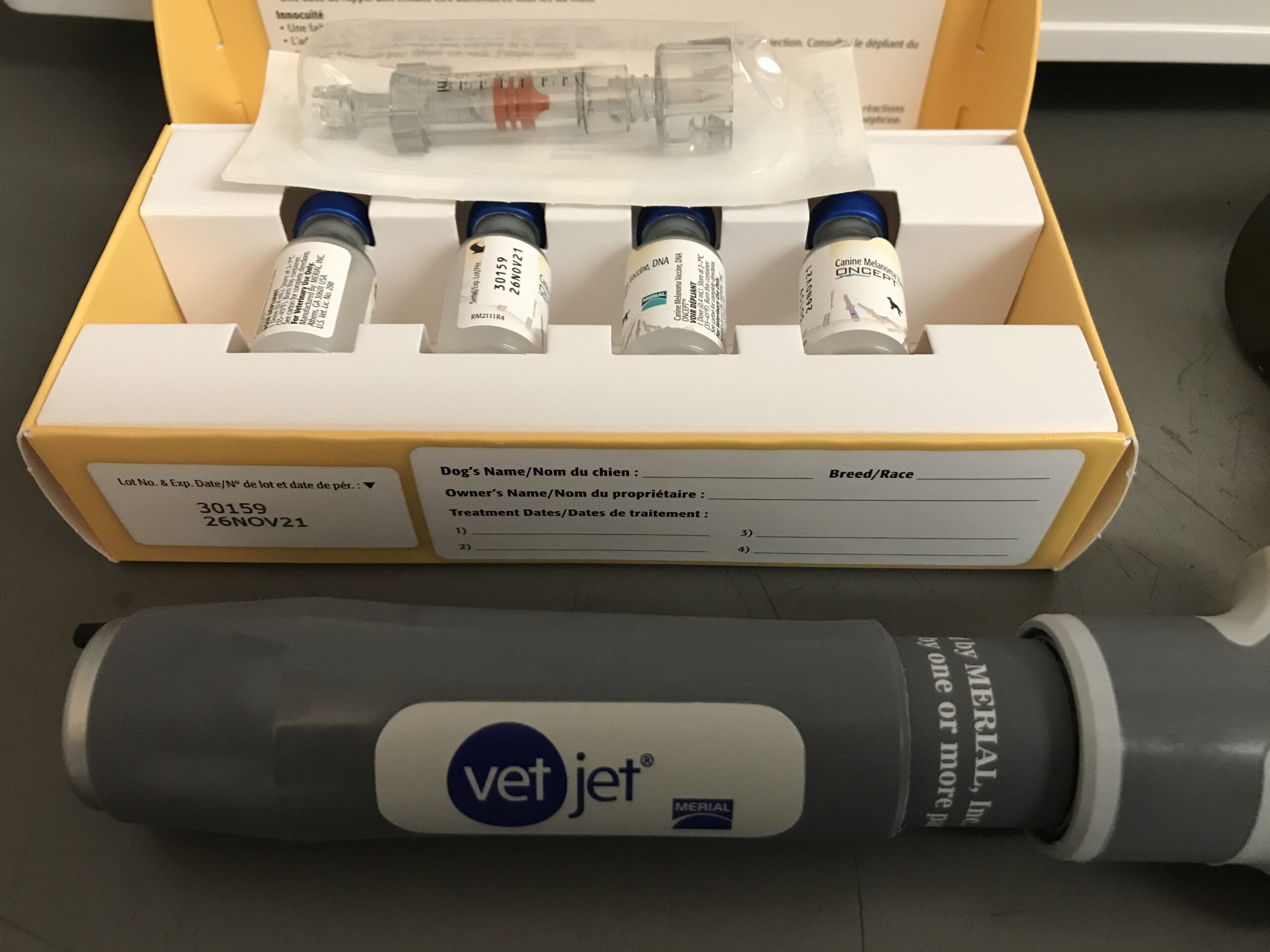
vaccines & special applicator
